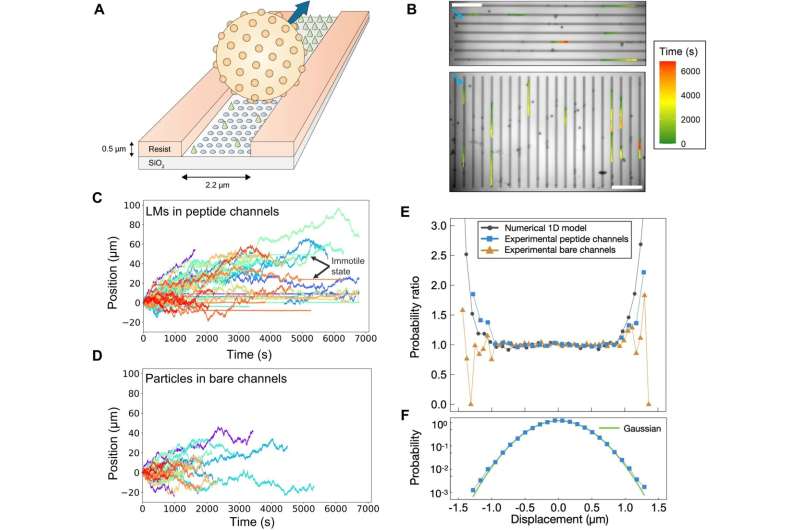This article has been reviewed according to Science X's editorial process and policies. Editors have highlighted the following attributes while ensuring the content's credibility:
fact-checked
trusted source
proofread
Research team designs a cutting-edge protein 'lawnmower'

An SFU-led collaboration has designed the first synthetic protein-based motor that harnesses biological reactions to fuel and propel itself.
"Imagine if a Roomba could be powered only by the dirt it picks up," says SFU Physics professor Nancy Forde, one of the authors of the study.
The team's paper, led by SFU Physics Ph.D. graduate Chapin Korosec and published in Nature Communications, describes a protein-based molecular motor called "The Lawnmower," which has been designed to cut a lawn of peptide "grass." The motor uses the digestive enzyme trypsin to cut the peptides and convert them into the energy it needs to propel itself.
The researchers at SFU and in Lund, Sweden demonstrated that the Lawnmower is capable of self-guided motion and can be directed in specific directions using a specially designed track, an important step towards their implementation in a variety of settings.
The team's findings build on decades of research on the role and function of molecular motors in organisms. As the researchers explain, all living systems, from humans to plants to bacteria, are kept alive by protein-based molecular motors. These motors convert chemical energy from one form into another to do useful work such as facilitating cell division, delivering cargo, swimming towards food or light, and maintaining healthy tissues.
The Lawnmower is the first artificial motor device created with proteins from nature. As Forde explains, these experiments help researchers test our understanding of how molecular motors work in nature.
"If the rules that we've learned from studying nature's molecular motors are correct and sufficient, then we should be able to build motors out of different protein parts and have them work in expected ways," she says.
In the future molecular motors may have important applications in medicine and biocomputing. In the human body, motor proteins are especially important for transporting cargo within neurons. Knowing how these molecular machines work may be key to understanding and treating motoneuron diseases such as multiple sclerosis and spastic paraplegia.
Molecular machines designed to mimic biological processes may also help health care providers deliver more targeted treatment for diseases.
"Influenza is thought to work as a molecular motor to infiltrate the area around cells in order to infect them," Forde says. "Maybe synthetic motors could use the same approach, but rather than infecting cells, they could be engineered to deliver drug payloads to specifically target diseased cells."
"We are inspired by the Nobel-prize-winning physicist, Richard Feynman, who famously wrote 'What I cannot create, I do not understand.' Our team's work aims to test our understanding of the fundamental operational principles of molecular machines by trying to create them from scratch."
More information: Chapin S. Korosec et al, Motility of an autonomous protein-based artificial motor that operates via a burnt-bridge principle, Nature Communications (2024). DOI: 10.1038/s41467-024-45570-y
Provided by Simon Fraser University





















